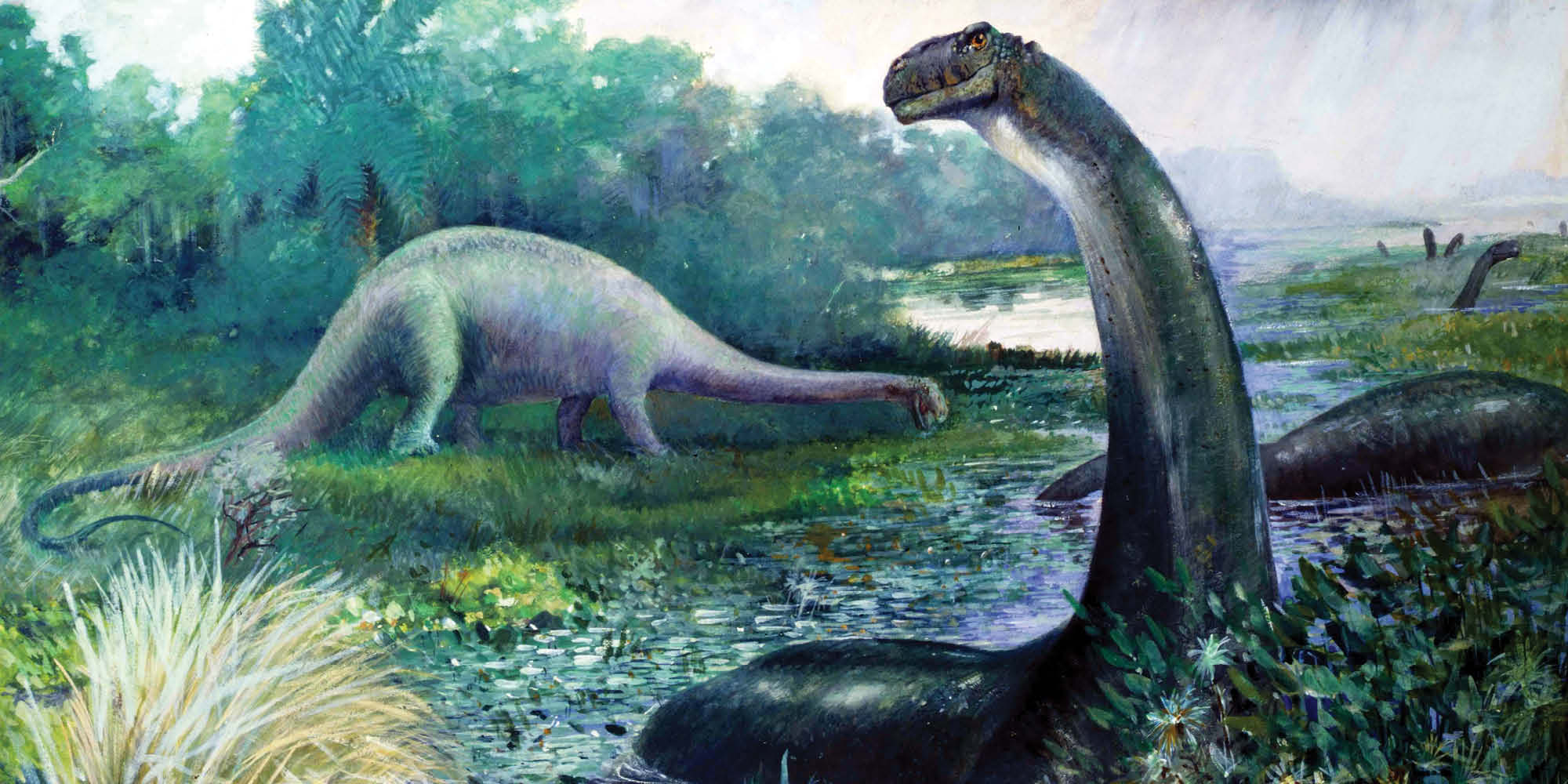
In 1903 paleontologists decided the genus Brontosaurus—which influenced the mokele-mbembe legend—was actually the previously named Apatosaurus and relegated it to a fossilized footnote until 2015, when a study concluded they were indeed distinct. (Illustration by Charles R. Knight, 1897)
How a UChicago biochemist gained fame—and lost credibility—when he developed a midlife obsession with legendary creatures.
In the 1985 Disney movie Baby: Secret of the Lost Legend, a paleontologist finds a living brontosaurus family in Ivory Coast. The locals refer to these dinosaurs as mokele-mbembe, real-life legendary creatures rumored to roam the Congo River Basin.
The film’s villain is a ruthless professor who will stop at nothing to claim credit for the discovery. He too is purportedly based on a real (though by all accounts scrupulous) character: Roy P. Mackal, SB’49, PhD’53, a University of Chicago biochemist who undertook two expeditions to find the mokele-mbembe in the early 1980s. In addition to—and sometimes in conflict with—his career as a scientist, Mackal was a self-proclaimed cryptozoologist, a seeker of hidden animals.
Cryptozoology is a pseudoscience aimed at finding hypothesized but unsubstantiated creatures called cryptids. Bigfoot, the Loch Ness Monster, and the Abominable Snowman are the most famous, but the list is extensive: hybrids, extinct species surviving in secret, megafauna, wandering wildlife in unnatural habitats, and missing evolutionary links. These capture the minds—and money—of cryptid hunters, who search for evidence. Their grandest ambition is to trap a creature. (Killing a cryptid would be antithetical to cryptozoology’s growing conservationist leanings. In fact, it’s illegal in many states, by ordinance or default, to kill a Sasquatch. It is perfectly legal, however, to shoot a Bigfoot in Texas.)
Cryptid hunters range from hobby tourists, who camp in rumored habitats hoping to glimpse a cresting lake monster, to academics, who publish scholarly research and mount expeditions. Mackal was of the latter breed, and the mokele-mbembe was his great white whale.
Mackal’s passion for cryptozoology came at a high professional cost. He did not lose his job at UChicago—he was protected by tenure—but he was scorned by his colleagues and his prestige as a biochemist plummeted. Meanwhile, as his cryptozoology work appeared in the New York Times, People magazine, and Arthur C. Clarke’s Mysterious World, Mackal rose to stardom as a “monstrologist.”
He never abandoned his scientific ideals, but Mackal felt trapped by the confines of his lab. He made groundbreaking discoveries about the smallest microbes on earth—viruses contained in test tubes—but he wanted something bigger, wilder, able to consume him. Creatures at that scale are rare in the modern world—except in legend. Rather than return to his bench and his “cute little scientific problems,” as he called his biochemical work, he chased the dream.
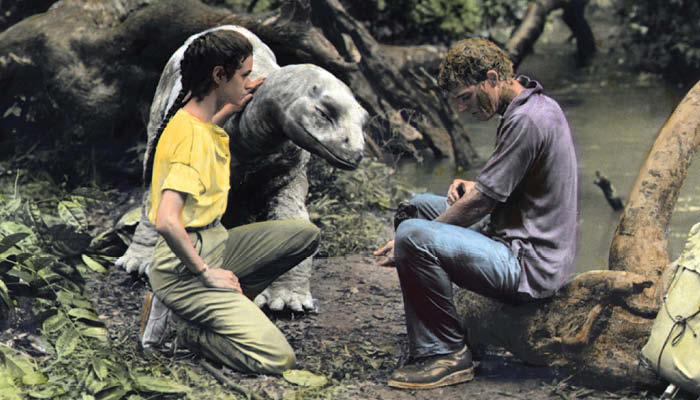
When Mackal died, in September 2013 at 88, word spread through the cryptozoology community before news outlets published an obituary. Much like reports of the creatures he hunted, his story was passed from person to person, without conclusive documentation.
Mackal was born in 1925 in Milwaukee. As a child he was entranced by books of lost worlds, like Jules Verne’s Twenty Thousand Leagues Under the Seas (James R. Osgood, 1873). Mackal himself cited The Lungfish and the Unicorn (Viking Press, 1941) by self-proclaimed “romantic naturalist” Willy Ley as sparking an interest in fantastical beasts.
His path to science—and on to pseudoscience—started at the University of Chicago. After serving in World War II, he enrolled at the University to study biochemistry, investigating bacteriophages (viruses that infect bacteria) and the lysogenic cycle, one way a virus replicates its DNA using the host cell’s natural processes. After earning a PhD, Mackal joined the faculty in 1953. In 1964, the year he rose to associate professor, he and another scientist were the first to grow viruses outside of living cells.
When he wasn’t in the lab, he was often in the machine shop, former colleague Edward Brody, MD’64, PhD’65, told the American Society for Biochemistry and Molecular Biology member magazine in 2014. An accomplished engineer, Mackal held several patents, including designs for an automatic parachute and recovery system for research rockets and a hydrogen generator for weather balloons. Being a “master craftsman,” in Brody’s words, helped him later in his cryptozoology career. Another former colleague remembered Mackal as an imaginative scientist and an adventurer. He reportedly married four times and had several children.
In 1965, at age 40, Mackal was vacationing in Scotland when he happened upon members of the Loch Ness Phenomenon Investigation Bureau, who were monitoring the lake from observation vans. Fascinated, he joined them and began monitoring Loch Ness himself. A man in search of a zoological romance had found one.
While he continued virology research at UChicago, Mackal also served as scientific director of the Loch Ness Investigation Bureau, where he attempted to bring systematic methodology to the organization. Under his leadership, from 1965 through its disbanding in 1975, the bureau used sonar and miniature submarines to scan the lake, and Mackal engineered a biopsy harpoon to sample DNA should he ever get close enough to the monster. “Roy’s approach to cryptozoology was scientific,” Brody said. “He studied the subject assiduously and knew that finding positive results would be difficult, even unlikely, but he thought the risk was worth taking, because he was passionate about the subject.”
Mackal’s doctorate appealed to the cryptozoology community; his academic pedigree lent credibility to their cause. Cryptozoology is full of doctorates, but often in specialties unrelated to wildlife. The emphasis on expertise is a practice called “credential mongering,” writes paleontologist and cryptozoology skeptic Donald Prothero, coauthor with Daniel Loxton of Abominable Science! Origins of the Yeti, Nessie, and Other Famous Cryptids (Columbia University Press, 2013). The premise is that someone with expertise in one field must be credible in others, like a cardiothoracic surgeon hawking diet pills.
When Mackal published his first book, The Monsters of Loch Ness (Swallow Press, 1976), credentialed zoologist Bernard Heuvelmans gave it a blistering critique. Considered the “father of cryptozoology,” Heuvelmans took exception not to Mackal’s lack of scientific rigor but to his failure to adequately address the extensive Loch Ness Monster literature. Undeterred, Mackal followed his Loch Ness chronicle with Searching for Hidden Animals: An Inquiry into Zoological Mysteries (Doubleday, 1980), positioning him as a prominent voice in cryptozoology.
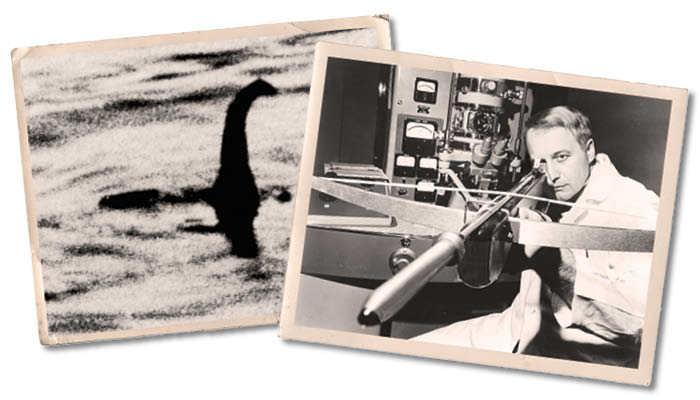
Despite no substantiated Nessie evidence, Mackal hit the lecture circuit in the late 1970s. After a 1977 talk at Amarillo College in Texas, he was approached by independent explorer James Powell Jr., who had studied crocodiles in Gabon and heard stories of a river monster. Through Powell, Mackal became enamored with the mokele-mbembe, whose Lingala language name is often translated as “one who stops the flow of rivers.” They organized an expedition to the Republic of the Congo; so eager was Mackal that he booked plane tickets before obtaining visas.
Documented sightings of the legendary creature date back to 1776, when a French missionary described animal tracks three feet in circumference. Since then, the mokele-mbembe has been reported in the Democratic Republic of the Congo, Equatorial Guinea, Gabon, Cameroon, the Central African Republic, and the Republic of the Congo, especially around Lake Tele. Anecdotes from indigenous inhabitants describe a hairless, elephant-sized, red/brown/gray animal with a long neck and long tail.
Something important to note about cryptozoology: stories from indigenous peoples are treated as legend until cryptozoologists find the creature themselves, mirroring the historical practice of zoology and science at large. A creature (or medicine or process) is not “discovered” until it is described by missionaries or colonial explorers.
Africa was particularly subject to European biases that the continent was primitive, and indigenous inhabitants had been left behind by civilization and even evolution. Mackal’s introduction to his third book, A Living Dinosaur? In Search of Mokele-Mbembe (E. J. Brill, 1987) reads: “Africa! For two centuries the name has conjured up for westerners an image of a dark continent filled with strange beasts, primitive peoples, vast unexplored deserts, swamps, and jungles.” If dinosaurs still roamed the earth, it would be in Africa.
Descriptions of the mokele-mbembe began referencing dinosaurs after the first brontosaurus fossils were found in the 1870s. Exotic-animal dealer and showman Carl Hagenbeck connected the mokele-mbembe to the newfound dinosaurs in his book Beasts and Men: Being Carl Hagenbeck’s Experiences for Half a Century Among Wild Animals (Longmans, Green, 1911). “The natives, it seemed, had told both my informants that in the depth of the great swamps there dwelt a huge monster, half elephant, half dragon,” he writes. “It seems to me that it can only be some kind of dinosaur, seemingly akin to the brontosaurus.” It was a brief mention in the book, but driven by Hagenbeck’s fame, a legend was born.
Mackal and Powell organized two expeditions to the Congo River Basin in 1980 and 1981—the second funded in part by the National Geographic Society—which were chronicled in A Living Dinosaur? The book, which reads like a travelogue, details how they mounted an expedition, including connecting with an embedded host. For Mackal, that was Pastor Eugene Thomas, who had ministered in the area since 1955 and “was with us not only to interpret, but also to spread Christianity.”
Between providing medical supplies to locals and scanning the river with sonar, Mackal interviewed indigenous inhabitants, searching for informants who had seen the creature. Some stories were unreliable or even coerced. In a village near Lake Tele, inhabitants told Mackal they had never seen a mokele-mbembe, to his astonishment. “It became clear that the people of Moungouma Bai were hiding information,” writes Mackal. A Congolese government official tasked with keeping the expedition safe “made an impassioned plea for cooperation, first conciliatory and then threatening,” which conveniently jogged their memories. Eight years later, British travel writer Redmond O’Hanlon was told by the son of a village elder that tales of the Congolese dinosaur were “to bring idiots like you here. And make a lot of money.”
Mackal’s expeditions turned up only inconclusive footprints. He believed the creature to be a sauropod or a monitor lizard but writes: “If … the Mokele-mbembe is a giant monitor lizard, it would have to be a very strange lizard indeed, quite unlike any known forms, living or extinct.”
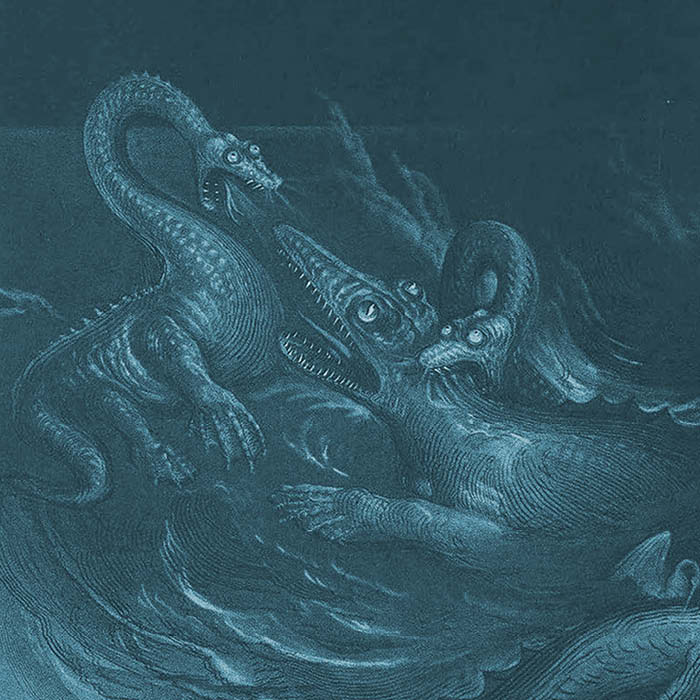
During a 1982 meeting at the Smithsonian National Museum of Natural History, Mackal cofounded the International Society of Cryptozoology (ISC) along with Heuvelmans (who wrote a glowing foreword to A Living Dinosaur?) and Richard Greenwell, a cryptozoologist who accompanied the second African expedition. The ISC would analyze potential evidence, like “photography, sonar tracks, footprint casts, tissue samples, and hair samples.”
The society, which dissolved in 1998, ran a peer-reviewed journal, Cryptozoology. One might wonder how such a journal would be refereed; until the field is a recognized discipline, Mackal said in a 1998 interview with a fellow cryptozoologist, “we are all amateurs.” If the ISC’s board of directors was indicative of professionalism, reviewers were experienced scientists in related fields.
Mackal’s UChicago colleague and fellow eccentric Leigh Van Valen (1935–2010), an influential but controversial evolutionary biologist who served on the board, founded his own academic journal that may exemplify Cryptozoology’s mindset and methodology. In an editorial note Van Valen writes: “I suppose Evolutionary Theory does get more than its share of crank papers submitted to it. I treat them all seriously; it can be hard to tell a crank from an unfamiliar gear.”
Mackal’s last virology paper appeared in 1971, but he continued writing scholarly articles about cryptids, including “Biochemical Analysis of Preserved Octopus Giganteus Tissue,” published by Cryptozoology in 1986. Drawing on his biochemical training, Mackal analyzed the amino acid composition of tissue collected from a preserved carcass found on a Florida beach in 1896. The cryptozoology angle: the carcass is a “globster,” an unidentified organic mass that washes ashore, inspiring reveries of sea monsters or an as yet undiscovered gigantic octopus. He concluded the tissue was consistent with a cephalopod.
(A follow-up study in 1995, which cites Mackal, deemed it whale blubber: “with profound sadness at ruining a favorite legend, we find no basis for the existence of Octopus giganteus.” That article appeared in the Biological Bulletin, published by the University of Chicago Press in conjunction with the Marine Biological Laboratory, under a department gamely named Sea Monsters.)
After Mackal retired in 1990, his later years were spent mostly in obscurity, but his name crops up now and then in reference to the Congolese dinosaur and the plesiosaur-like Loch Ness Monster—his first cryptid love. His papers are archived at the Traveling Museum of the Paranormal & Occult after being found in the shed of an undisclosed contributor.
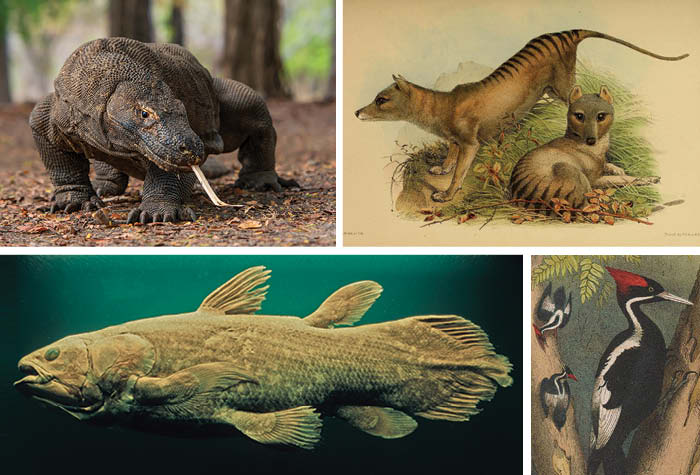
In 2012 a new Journal of Cryptozoology debuted. Its run was brief, but it prompted paleozoologist Darren Naish, who believes that cryptozoology and skepticism aren’t mutually exclusive, to write that the field shouldn’t be considered a pseudoscience. After all, cryptozoology employs hypothesis testing, self-correction, and evidence gathering.
Mackal himself believed that cryptozoology, at least the way he practiced it, “uses no paradigm that is contrary to established science. The only difference is that we are a little bit humble,” Mackal told the Chicago Tribune in 1988. “We don’t laugh at people when they say they have seen something new.” Nor does investigation hinge on the assumption that cryptids truly exist. “That’s the difference between me and the fanatic. And it’s crucial: I’m a scientist,” he said in a separate Tribune interview. “People on the fringe aren’t prepared to accept no for an answer. I am.”
Of course, cryptozoology relies on hope that there are hidden creatures out there. Mackal’s Searching for Hidden Animals cites wildlife formerly known only to locals, like the Komodo dragon and the okapi (a giraffe relative that looks like a deer-zebra hybrid, found in the Democratic Republic of the Congo). He also notes that the coelacanth, the Mesozoic-era lobe-finned fish, was thought to be extinct until one was caught near South Africa in 1938. “A Lazarus taxon,” says Michael Coates, an evolutionary biologist in the Department of Organismal Biology and Anatomy, “arisen from the dead.”
So could Nessie be a dinosaur-era creature? “The Loch Ness Monster is not a plesiosaur, no,” says Coates. (But we have two dino-contemporaries in or around Lake Michigan, he notes: the sturgeon and bowfin. The living editions of these fishes look pretty much like their Cretaceous ancestors.) Mackal came to believe that the monster was a zeuglodon, a primitive snake-necked whale, and that there was a sustainable breeding population to propagate the species—yet Loch Ness was under a glacier for most of the past three million years. And a sizable population of any animal would leave traces in the environment.
Those traces would alert cryptid hunters and zoologists alike to Lazarus taxa reappearances. Take, for instance, the thylacine, the “so-called Tasmanian tiger, rather more of a wolf,” says Coates, declared extinct in 1936. Enthusiasts continue to search, and photographic evidence continues to be debunked. They’re hoping to find dung, which “would be useful because that would have DNA,” he says, “but no such luck.” Perhaps that’s why people prefer the idea of Bigfoot, “highly sentient and clever enough to cover its tracks.” There would also be distinctive sounds exposing a covert creature; when an ivory-billed woodpecker was reported in 2004, half a century after its last sighting, the Cornell Lab of Ornithology went looking—and listening—for the elusive bird, but never found evidence.
“I’m not sure exactly what the boundaries are,” Coates says. “Is hunting for a thylacine or an ivory-billed woodpecker cryptozoology or just a hopeful search?” Because things do turn up. (In May scientists announced the discovery of a Galapagos Island tortoise whose species was declared extinct over a century ago. The expeditioners suspected one might be out there after they found tortoise droppings. Her lineage was confirmed via DNA.) But searches must be grounded in data, with hypotheses that have predictive and testable outcomes. Those criteria aren’t often met by cryptozoological expeditions.
Hundreds of new species are also found every year. In 2020 London’s Natural History Museum described 503 new species, including a monkey—but most were beetles. “What’s the chance of finding a new large mammal? It’s fairly remote,” says Coates. “The curve of discovery is flattening out.” New finds are more likely to be invertebrates, but cryptozoologists don’t get excited by insects. If you want to find a new vertebrate, Coates says, look for fishes.
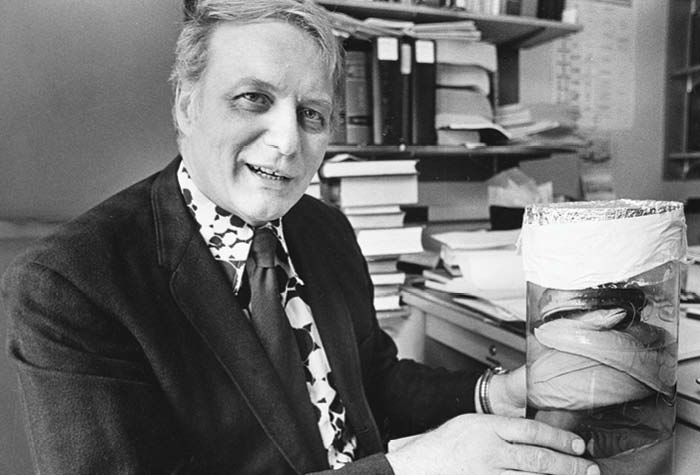
Mackal was dedicated to maintaining skepticism—but he was also convinced he saw Nessie. In 1970, while recording lake audio, he saw the water boil up 30 feet away. “The back of the animal surfaced, rising eight feet out of the water, roiling, twisting from left to right,” he told the Tribune in 1981. “I know what I saw. But the sight sent my credibility down the tubes.”
Mackal was mocked by colleagues and received hate mail. He told the Scientist he was “kicked out” of the biology department and told the Chicago Sun-Times that he got a “lateral promotion” to University energy and safety coordinator in the 1970s. But he told the Tribune he had struck a deal—he would save the University money by making buildings more energy efficient and would manage radiation hazards and toxic chemical disposal, and in return he would retain a research appointment in biology and teach one course—An Inquiry into Zoological Mysteries.
“They’ve been wonderful to me,” he said. “The administration believes a professor should be able to make a fool of himself if he wants to, so long as it’s not immoral or illegal. If something works out and we get famous, I’m their boy. If not, they never heard of me.”
If Mackal were in UChicago’s biology department today, Coates would hope that his extracurricular activities would be tolerated, that creativity wouldn’t be stifled. “It’s all good for an argument,” he says. “There’s room for all of this.” But resources are limited, and you “do have to make difficult decisions about what you think is valuable.” (Mackal funded his expeditions though personal savings, media collaborations, and book proceeds.)
Yet Coates finds the need to seek awe in imaginary (or as Mackal would have said, undiscovered) creatures slightly exasperating when the natural world is already wondrous. “Sea serpents are the rotting remains of basking sharks,” he says. (Baskers decay in a pattern that leaves a plesiosaur-like carcass.) “I get excited about basking sharks! They’re just gorgeous.”
Lorraine Daston, visiting professor of social thought and history and coauthor with Katharine Park of Wonders and the Order of Nature, 1150–1750 (Zone Books, 2001), imagines that Mackal and his ilk do view hidden creatures as wonders of nature—but wonder, she says, is the response to something that seems to defy expectations. (Heuvelmans defined a cryptid as “truly singular, unexpected, paradoxical, striking, or emotionally upsetting,” fitting Daston’s conditions for wonder, and those characteristics set most cryptids apart from known animals.)
Cryptozoology’s obsession with natural marvels, Daston suggests, may be driven by “the thrill that a fairy tale or legend might turn out to be true.” But the conviction that such legends must have arisen from real creatures, she says, is a contracted, narrow view of creativity, a “very pessimistic statement about the human imagination.”
For Mackal, it seems a cryptid’s eternal elusiveness was the source of wonder more so than the creature itself. When he thought he saw Nessie, the passion evaporated. “For me, it was solved. Not really, but hey, I saw it. I don’t care if anyone believes me.” He needed a new quest: to the Congo seeking the mokele-mbembe, to Namibia searching for pterosaurs, to exotic Vermont looking for a monster in Lake Champlain. The yearning for adventure he’d harbored since childhood was never satisfied— merely redirected.
